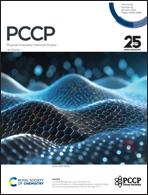SadNet: a novel multimodal fusion network for protein–ligand binding affinity prediction†
Abstract
Protein–ligand binding affinity prediction plays an important role in the field of drug discovery. Existing deep learning-based approaches have significantly improved the efficiency of protein–ligand binding affinity prediction through their excellent inductive bias capability. However, these methods only focus on fragmented three-dimensional data, which truncates the integrity of pocket data, leading to the neglect of potential long-range interactions. In this paper, we propose a dual-stream framework, with amino acid sequence assisting the atomic data fusion for graph neural network (termed SadNet), to fuse both 3D atomic data and sequence data for more accurate prediction results. In detail, SadNet consists of a pocket module and a sequence module. The sequence module expands the “receptive field” of the pocket module through a mid-term virtual node fusion. To better integrate sequence-level information from the sequence module and 3D structural information from the pocket module, we incorporate structural information for each amino acid within the sequence module. Besides, to better understand the intrinsic relationship between sequences and 3D atomic information, our SadNet utilizes information stacking from both the early stage and later stage. Experimental results on publicly available benchmark datasets demonstrate the superiority of the proposed dual-stream approach over the state-of-the-art alternatives. The code of this work is available online at https://github.com/wardhong/SadNet.



 Please wait while we load your content...
Please wait while we load your content...